Rare Saturday session...
I would withhold judgement about how good I'm doing until I'm finished. I say that because, while I had some successes today, I had a near miss that could have been catastrophic.
First thing I did was air brush the canopies starting with semi-gloss black and then with sea blue, I also airbrushed the frame on the bullet proof glass plate.

The results were gratifying. The Tamiya masks were very accurate only limited by your ability to cut them out correctly. In retrospect, I should a have left the masking in place on the outside until it was glued onto the plan to protect the glazing from anything. I may put some masking on them just for that purpose. It won't have to conform to the canopy frame, just protect the clear stuff.
I was trying to decide what kind of gloss clear I was going to use prior to decaling. I have Pledge with Future, Tamiya Gloss Spray and Testors High Gloss Clear Coat for model car building. I painted the rear of the test article with Tamiya and the front with Testors. I know how Future works. I like the level of gloss the Testor product produced. It's not Gloss Coat, it's a differently formulated product.
I then, using the extra decals from configurations I'm not building, applied a stars and bars to the front on the Testor coating. I read that the decals are thick and unforgiving, and they were right. Not only was it thick, but it fell apart in three places. I got it to settle in a bit with MicroScale products, but wasn't very pleased. I then coated all the decals my config was going to use with MicroScale Decal Film coating. When it dried I put another decal on the aft and this time it was successful. Here was the broken decal.
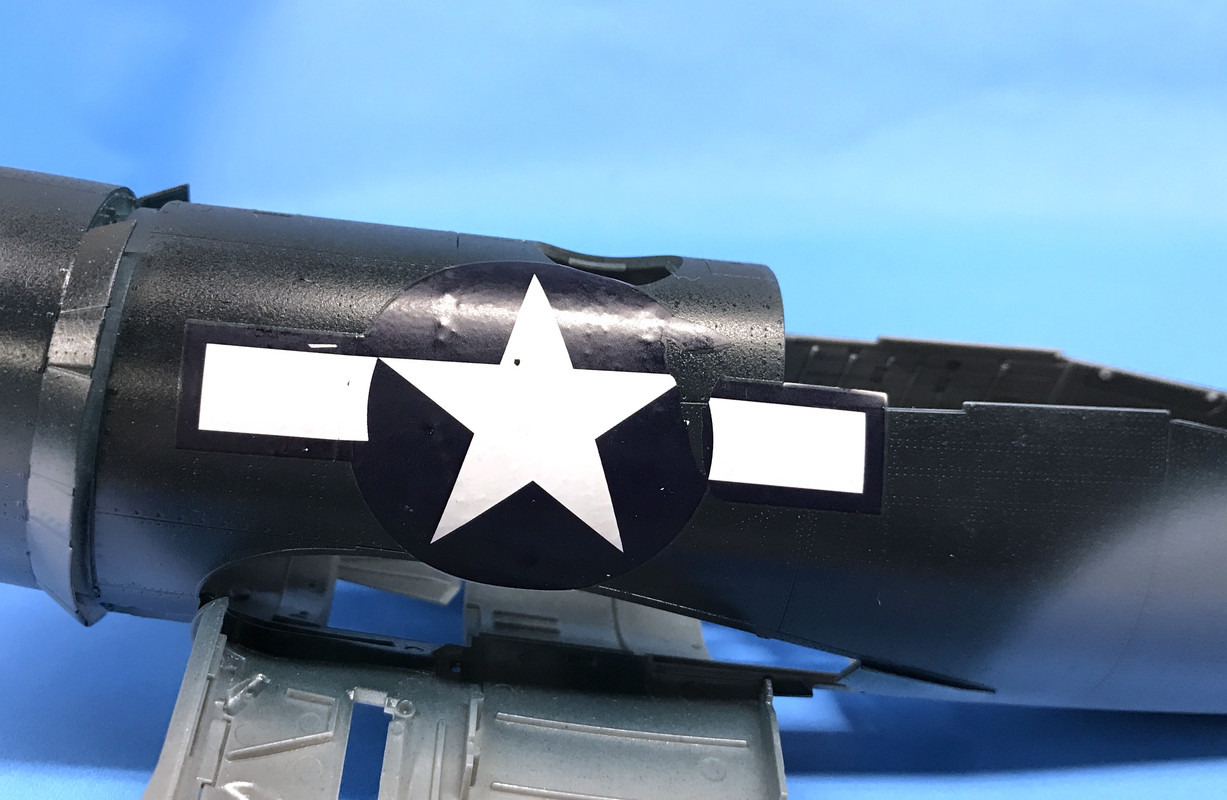
And here's the successful one.
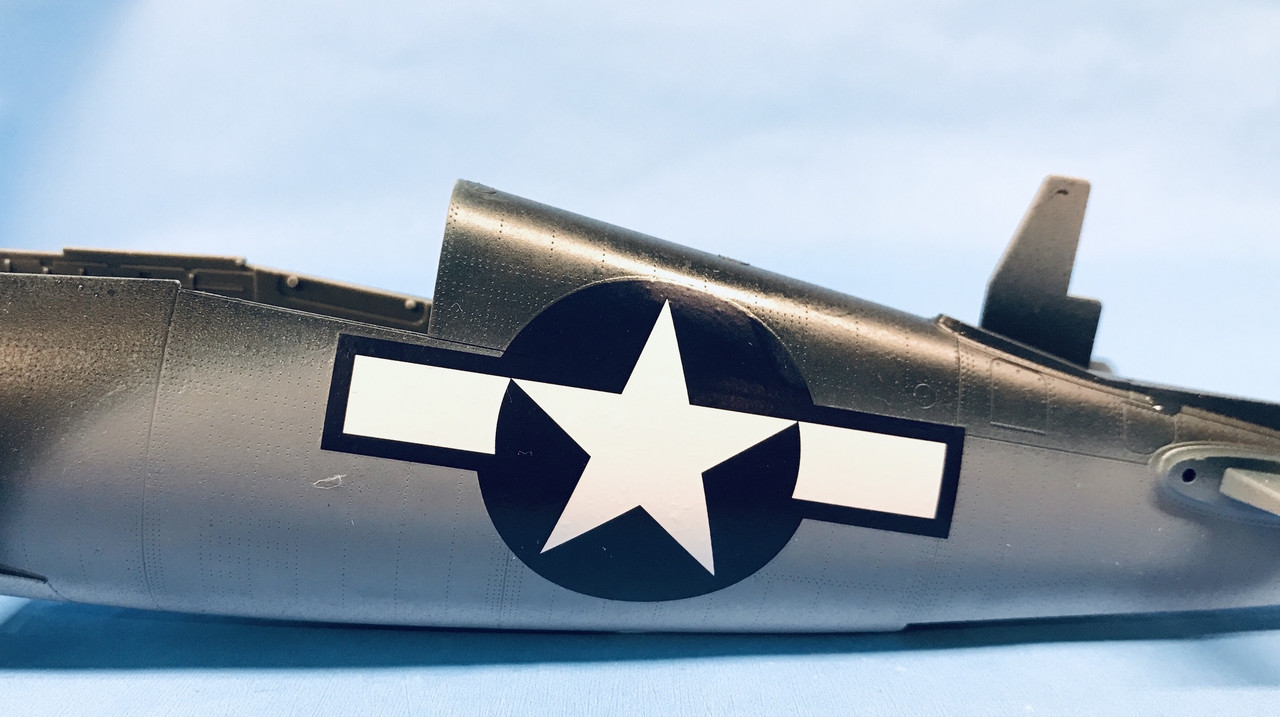
I then glossed the wings on the two faces that are receiving the big decals. That's the only drawback with 1:32 planes (besides finding display space), the decals can be huge.
With the decal film coating, none of them cracked or broken in such a way as to make them unusable. The first one did crack, but with setting solution, it's not visible. Here is a shot showing both wings just after decaling before the setting solution finished working.
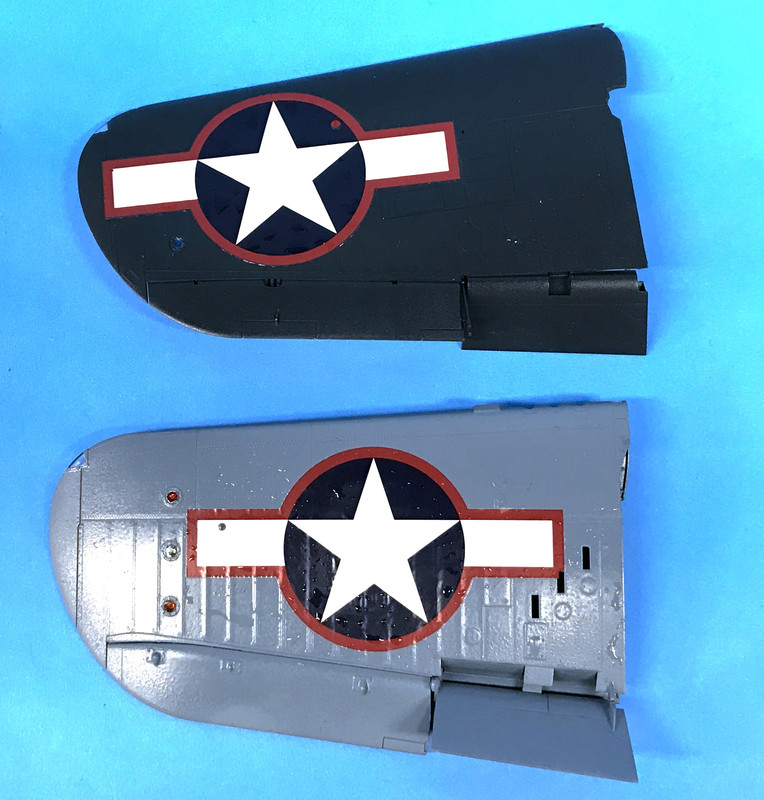
When fully dried, they did settle in pretty well, but do obscure some of the underlying details. I got a note from one of my buddies at the hobby shop that I should use AK Ultra Matte to re-coat after decaling. I will buy it if Marty recommends it. The decals have actual holes in them to enable some protruding details to show through. I was careful to not put the decal film liquid on these holes so they would be clear and not any trouble.
I then re-covered the pilot with some wet toweling so the gloss would get him, and sprayed the plane in the areas where big or complex decals were going.
And then the first diaster happened. To spray the plane, I was holding the plane by the cowl since it didn't get many decals, and then the engine separated from the plane!! I didn't realize that the joint was not that structural.
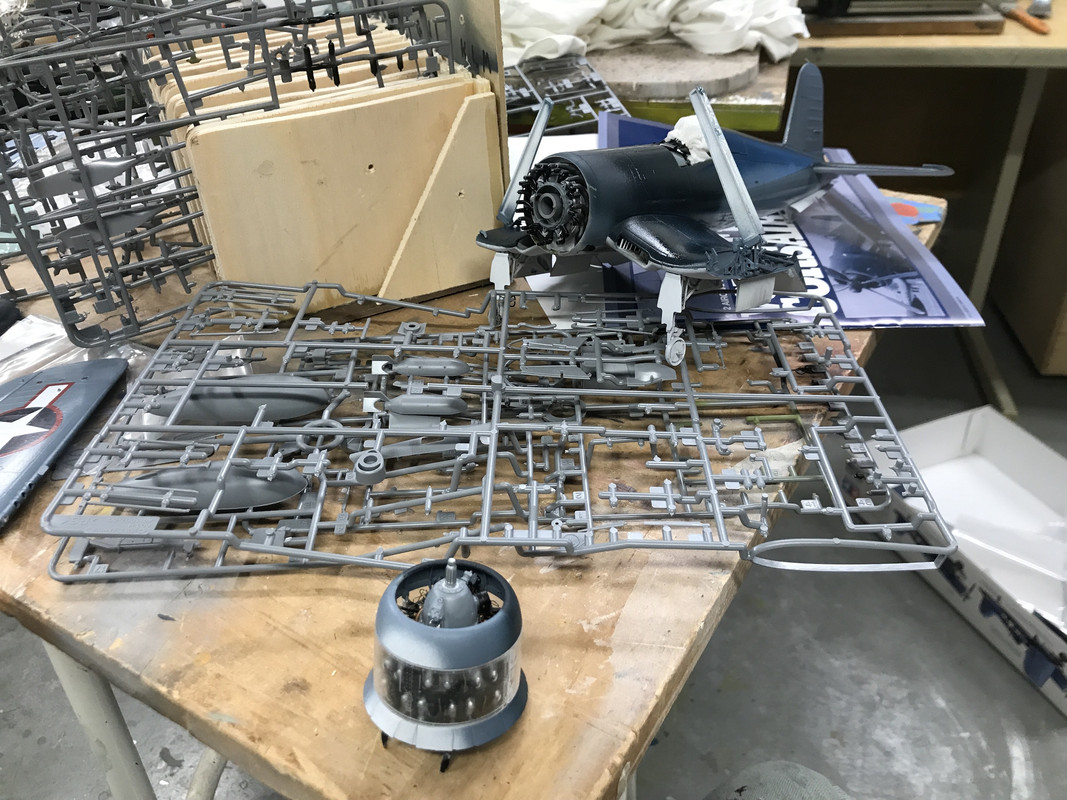
To add insult to injury, when I grabbed at the fuselage which was falling away I grabbed the very tacky gloss coating and gave it some nasty fingerprints.
I glued the engine back on, and let it set up and then went to repair the fingerprints. Luckily, they'll behind the big fuselage decals.
And then the 2nd disaster hit. Engine separated again, and this time, engine and plane hit the concrete!! Speed ring detached from the front of the engine, that pesky landing gear door came off for the 4th time, a faux wing hinge broke off, and the two bottom exhaust sets broke loose.
It took me a while to triage the mess. I needed to reattach the exhaust with brass pins and did the same with the broken wing hinge. The gear door went back where it came from without protest. I got the engine back on with Testor Tube Cement this time to give it more manipulation time, and got a bit on the cowl behind the cowl flaps. I was able to touch up spray the sea blue to fix the glue smudge, and got it all back togeher. Whew!!
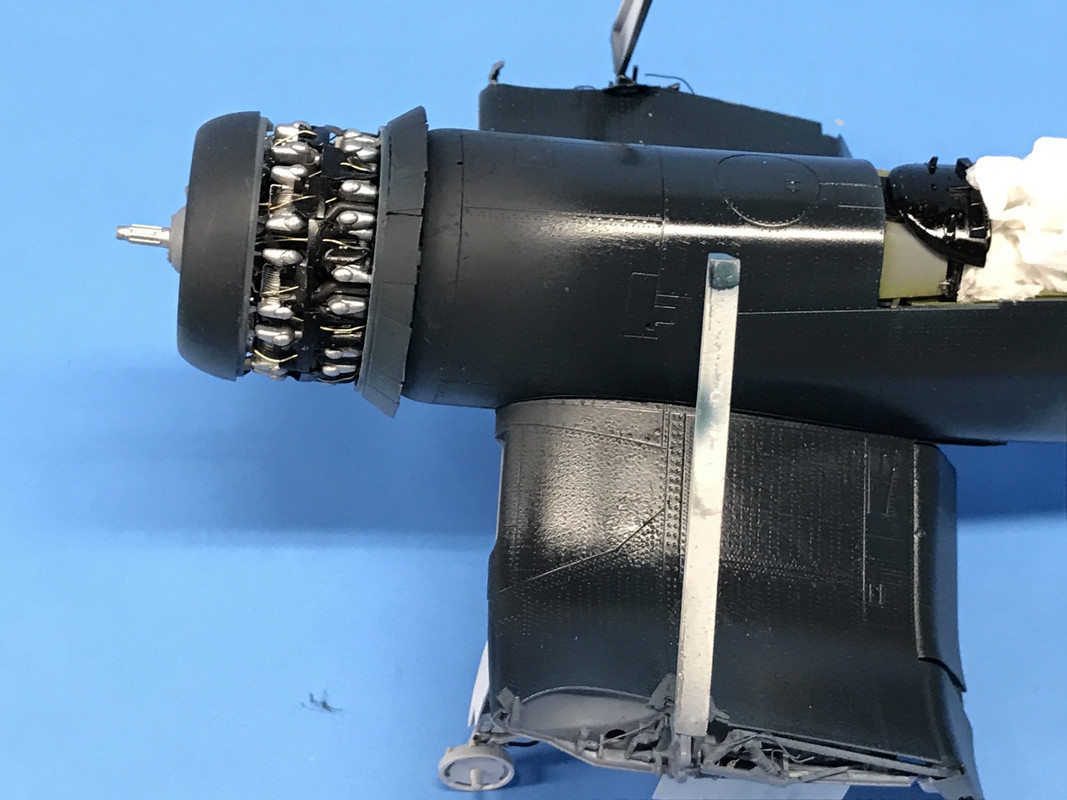
Alls well that ends well. It could have been much, much worse. The landing gear didn't get hurt. Those delicate wing fold regions were unscathed except for that fake hinge. Nothing in the cockpit was harmed, and nothing on the engine itself, even though it bounced around on a concrete floor. So I'm relieved.
I also got that all important P&W decal on the engine gear case.

I did get most of the stenciling on the wings' bottom, and the fuse with have a chance to dry completely before decaling it. So it was a productive and scary Saturday.